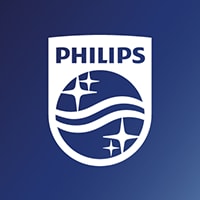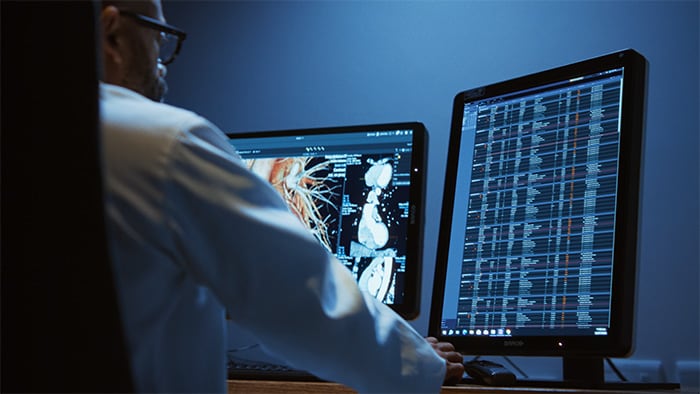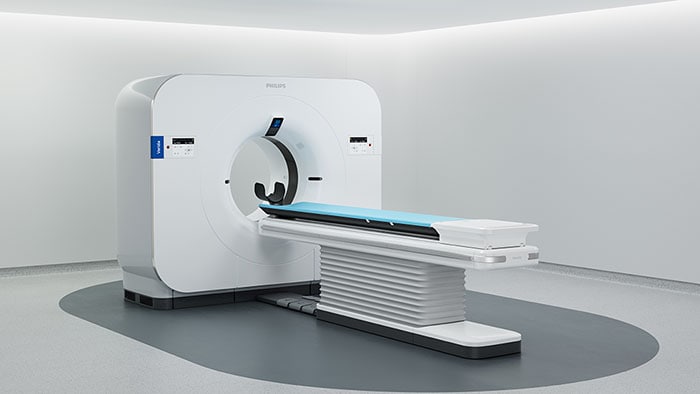Predictive analytics in healthcare: three real-world examples
Jun 12, 2020 | 9 minute read
Predictive analytics in healthcare can help to detect early signs of patient deterioration in the ICU and general ward, identify at-risk patients in their homes to prevent hospital readmissions, and prevent avoidable downtime of medical equipment.
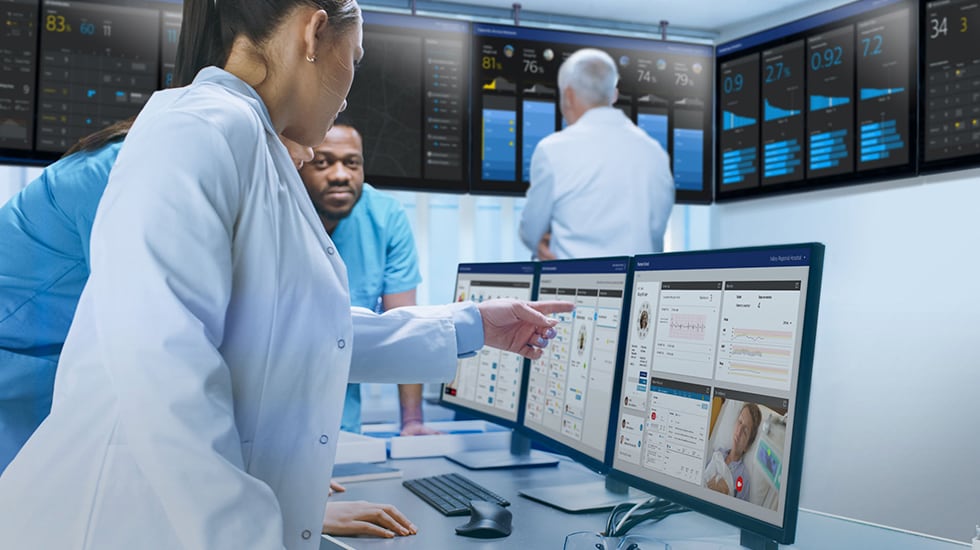
Much of medicine is about anticipating and reducing risk based on current and historical patient data. How likely is this cancer patient to suffer complications if we perform surgery? What is the chance that this pneumonia patient will be readmitted to the intensive care unit (ICU) within 48 hours if she is discharged? Clinicians have always had to make decisions without absolute certainty – but with the advance of predictive analytics in healthcare, these decisions promise to be better informed than ever.
Predictive analytics aims to alert clinicians and caregivers of the likelihood of events and outcomes before they occur, helping them to prevent as much as cure health issues. Driven by the rise of Artificial Intelligence (AI) and the Internet of Things (IoT), we now have algorithms that can be fed with historical as well as real-time data to make meaningful predictions. Such predictive algorithms can be used both to support clinical decision making for individual patients, and to inform interventions on a cohort or population level. Or they can even be applied to hospitals’ operational and administrative challenges.
Predictive analytics aims to alert clinicians and caregivers of the likelihood of events and outcomes before they occur, helping them to prevent as much as cure health issues.
Healthcare executives recognize the benefits. 60 percent of them say their organization has adopted predictive analytics, according to a 2019 survey from the Society of Actuaries. Of those, 42 percent have seen improved patient satisfaction since using predictive analytics, and 39 percent have saved costs.
How are these healthcare organizations turning data into forward-looking insights that support better patient care? Here are three examples of predictive analytics in healthcare in use today.
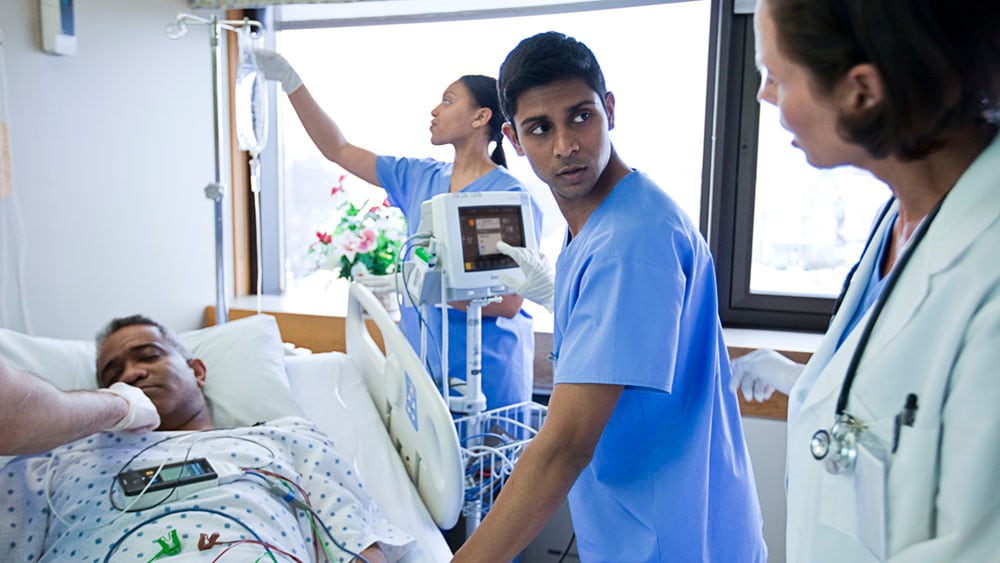
1. Detecting early signs of patient deterioration in the ICU and the general ward
Predictive insights can be particularly valuable in the ICU, where a patient’s life may depend on timely intervention when their condition is about to deteriorate. In many countries including the US, ICUs were already overstrained prior to the COVID-19 pandemic as a result of aging populations, increasing use of complex surgical procedures, and a shortage of intensive care specialists. Since the outbreak of the coronavirus, the number of patients requiring acute care in the ICU has surged, further fueling the need for technology to aid caregivers in rapid decision-making.
As the vital signs of patients are continuously monitored and analyzed, predictive algorithms can help to identify patients with the highest probability of requiring an intervention in the next 60 minutes. This allows caregivers to proactively intervene at an early stage, based on subtle signs of deterioration in the patient’s condition. Similarly, predictive analytics can estimate the probability that patients risk death or readmission within 48 hours if they were discharged from the ICU, helping the caregiver decide which patients can be discharged.
Such predictive algorithms are now also deployed in tele-ICU settings, where patients are monitored remotely by intensivists and critical care nurses that are in constant contact with bedside clinical teams.
In addition, predictive analytics can help to spot early warning signs of adverse events in a hospital’s general ward, where deterioration of patients often goes unnoticed for prolonged periods of time. Automated early warning scoring allows caregivers to trigger an appropriate and early response from Rapid Response Teams at the point of care. Using this approach, one hospital reported a reduction in adverse events by 35%, and a cardiac arrest reduction of more than 86%.
With the further adoption of wearable biosensors, it could become even easier for care providers to detect early signs of patient deterioration as patients move through different acuity settings in the hospital. Such biosensors adhere discreetly to the patient’s chest to collect, store, measure and transmit respiratory rate and heart rate every minute – the top two predictors of deterioration – as well as contextual parameters such as posture, activity level and ambulation. Because wearable biosensors enable remote monitoring without care providers having to carry out physical spot checks, they are proving to be particularly useful in the clinical surveillance of patients with COVID-19.
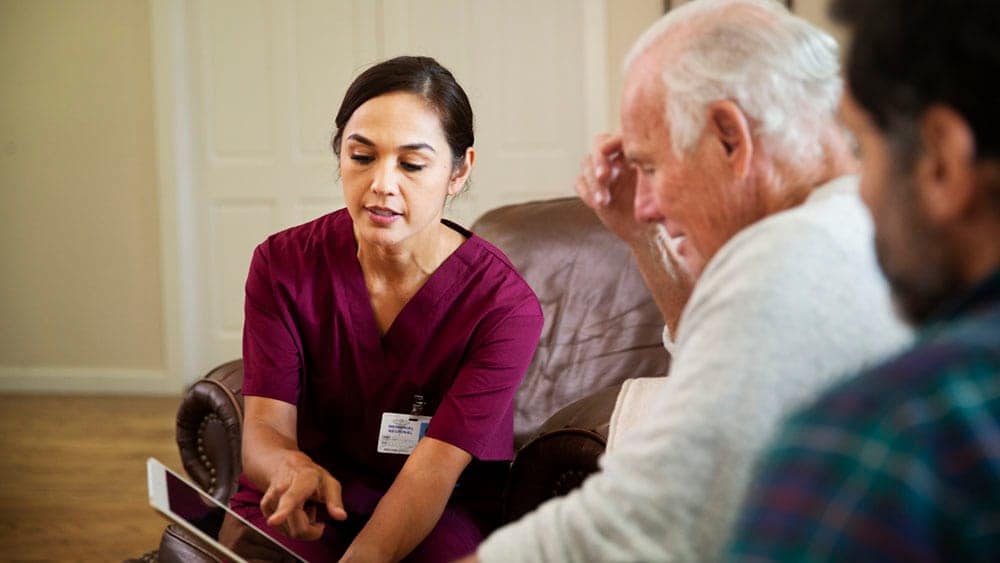
2. Delivering predictive care for at-risk patients in their homes
With its ability to help healthcare providers stay one step ahead, predictive analytics is proving its value not only in (virtual) hospital settings – but also at home, by preventing patients from backsliding into a need for acute care.
Today, after a hospital stay, many patients are discharged without long-term health monitoring, leaving them at risk of adverse events and hospital readmissions that potentially could have been avoided with appropriate preventative measures. Among the frail and elderly, falls at home are particularly common and a leading cause of fatal and non-fatal injuries. It presents another opportunity for predictive analytics to transform a reactive healthcare approach into a proactive one.
Predictive analytics can combine data from multiple sources – including hospital-based electronic medical records, fall detection pendants, and historical use of medical alert services – to identify seniors who are at risk of emergency transport in the next 30 days. This allows healthcare providers to reach out to a senior person even before a fall or other medical complication occurs, preventing unnecessary hospital readmissions and reducing costs of transportation, acute care, and rehabilitation.
In a similar vein, one medical home network in the US reported using machine learning to identify individuals with a heightened risk of developing severe complications from COVID-19. Rather than calling all 122,000 of their members to check in on their well-being, the home network took a more targeted, data-driven approach to focus their initial outreach on the 4.4 percent at-risk patients. By educating this group on when and where they should seek medical care, providers sought to proactively help at-risk patients while managing strain on healthcare organizations.
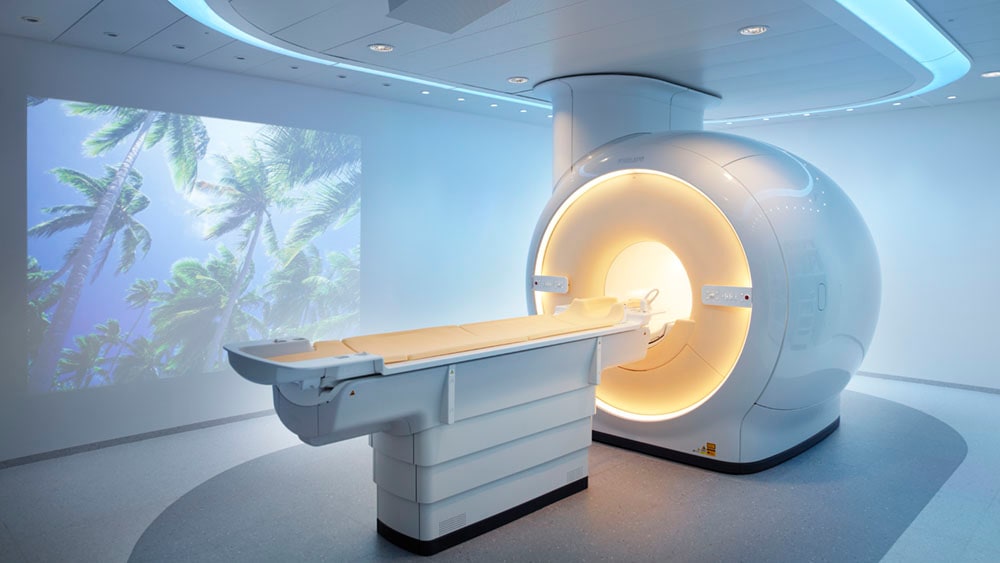
3. Identifying equipment maintenance needs before they arise
While the examples thus far focused on clinical use cases of predictive analytics, its possibilities don’t end there for healthcare.
In other industries such as aviation, predictive analytics has long been used to identify maintenance needs before they arise. Analyzing data from various areas on the aircraft, mechanical components are replaced well before they are estimated to go bad. For example, analysis of data transmitted from sensors in a jet engine during flight can provide 15-30 days’ advance notice of potential failures.
Healthcare operations can benefit from the same kind of prognostics. Certain components of medical equipment such as MRI scanners degrade over time through regular use. If you are able to predict when a component needs replacing, you can schedule maintenance at a time when the equipment is not in use (at night, for example) – minimizing unscheduled workflow disruptions that hinder both care providers and patients.
Predictive analytics helps to achieve just that. Sensors in an MRI scanner can relay technical data for proactive remote monitoring and analysis, bringing early warning signs of impending technical issues to light for timely replacement or repair. In the future, all medical equipment and devices in a hospital may have a full digital twin: a virtual representation that can be monitored from any location and that is continuously updated with real-time data to predict future utilization and maintenance needs.
Predictive analytics in healthcare calls for more than data alone
Given its potential to make clinical care delivery and equipment maintenance more proactive, a further uptake of predictive analytics in healthcare is to be expected. Other application areas include predicting and preventing appointment no-shows for more efficient patient scheduling, and modelling and managing patient flows throughout the hospital for optimal allocation of staff and resources.
Yet as informative as predictive algorithms can be, their impact ultimately relies on their knowledgeable use by domain experts – doctors, nurses, engineers, hospital administrators – who know how to weigh probabilities in the unique context of a patient or healthcare setting. That’s why the development and deployment of such algorithms requires expert input as much as the latest analytical capabilities.
Data can help to inform decisions – but it’s still people who make them.
Share this page with your network
